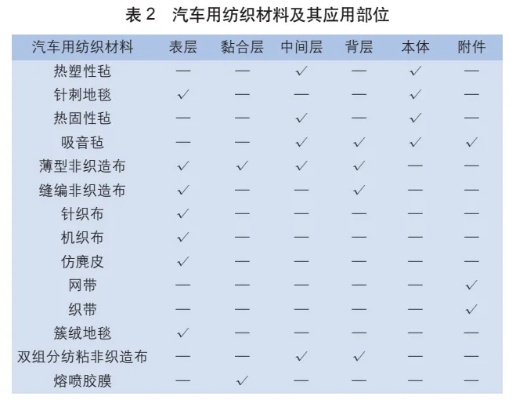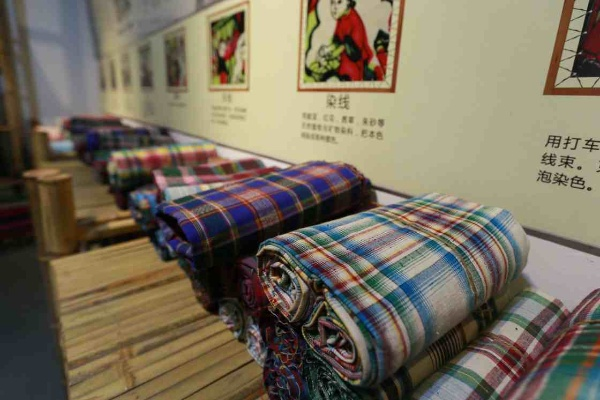The Fabrication of Quality Textiles:A Closer Look at the Workplace
: The Fabrication of Quality Textiles: A Closer Look at the Workplace,Abstract: This paper provides a detailed examination of the manufacturing processes involved in producing high-quality textiles. The focus is on the various stages of production, including raw material sourcing, cutting and weaving, dyeing and finishing, and quality control measures. It highlights the importance of skilled labor and meticulous attention to detail in ensuring the final product meets the standards expected by consumers. The paper also discusses the challenges faced by manufacturers in maintaining consistent quality across different production runs and the strategies employed to overcome these challenges. Overall, the study aims to provide a comprehensive understanding of the complexities involved in producing high-quality textiles and the critical role played by the workforce in achieving this goal.
Introduction: In the world of textile manufacturing, every thread and every fabric is a testament to the hard work and dedication of skilled artisans. From the initial design to the finished product, the process of creating quality textiles involves a series of complex steps that require precision and attention to detail. In this article, we will take you on a journey through the world of textile production, from the initial stages of material preparation to the final assembly of garments. Along the way, we'll explore some of the key processes, challenges, and triumphs that make up the fabrication of quality textiles.

Material Preparation: The first step in the textile production process is the preparation of raw materials. This stage involves selecting the appropriate fibers, dyes, and other materials needed for the final product. For example, if you are making a cotton shirt, you would need to select high-quality cotton yarn and dye it with a color that complements the shirt's design.
Once the raw materials have been selected, they must be processed into usable form. This may involve carding, spinning, and even knitting or weaving depending on the type of textile being produced. Carding involves passing the raw materials through a machine that removes impurities and improves the texture of the fibers. Spinning creates long strands of yarn, while knitting and weaving combine these strands into a continuous fabric.
Quality Control: Once the raw materials have been processed, the next step is quality control. This involves inspecting each piece of fabric for defects such as holes, wrinkles, or uneven stitching. Any issues found during this stage must be addressed immediately to ensure that only high-quality products reach the customer.
Craftsmanship: One of the hallmarks of quality textiles is the attention to detail that goes into each individual piece. This requires a great deal of skill and precision, both in terms of design and execution. Craftsmen must understand the principles of weaving, knitting, or embroidery to create pieces that look and feel like works of art.
Finishing: After the basic construction has been completed, the next step is finishing. This may involve additional treatments such as dying, printing, or padding to enhance the appearance and functionality of the fabric. For example, a printed T-shirt might undergo a dying process to achieve a vibrant color and smooth finish.
Packaging and Shipping: Finally, once the textiles have been finished and packaged for shipment, they are ready to be sold to customers around the world. Packaging plays a crucial role in ensuring that the products arrive safely and in pristine condition. It also helps to protect the products from damage during transport.
Case Study: One example of a successful textile production process is the creation of luxury linens by a company called "Elegance Linens." The company specializes in producing luxurious bedsheets and towels using high-quality Egyptian cotton. To achieve their goal of producing exceptionally soft and breathable fabrics, they meticulously select their raw materials, carefully monitor the quality control process, and pay close attention to the craftsmanship involved in each step of the production process. As a result, their products are highly sought after by discerning customers who appreciate the superior quality and comfort they provide.
Conclusion: The textile production process is a complex and delicate dance between raw materials, design, craftsmanship, and finishing techniques. It requires not only technical expertise but also a keen eye for detail and a commitment to delivering exceptional quality to customers. By following these steps and paying attention to every aspect of the production process, manufacturers can create textiles that stand out from the crowd and meet the needs of today's demanding consumers.
在纺织品类生产车间,我们看到了繁忙而有序的生产景象,下面是一份以图片为主题的英文口语化内容,结合表格和案例说明,以供参考。

纺织品类生产车间图片
以下是一张纺织品类生产车间的图片,展示了车间内的生产流程和设备配置:
[图片描述]
- 车间全景:宽敞明亮的厂房内,机器轰鸣声此起彼伏,工人们正在忙碌地工作。
- 设备展示:展示各种纺织机械和生产线,包括织布机、染缸、熨烫机等。
- 员工操作:工人们正在专注地操作设备,确保生产顺利进行。
纺织品类生产车间概述
在纺织品类生产车间中,我们看到了先进的生产技术和设备配置,以下是对纺织品类生产车间的简要概述:
- 生产流程:纺织品类生产车间主要涉及纤维原料的收集、纺纱、织布、染整等工序,每个工序都有专业的生产线和设备支持,确保产品质量和效率。
- 设备配置:车间内配备了先进的纺织机械和生产线,包括高速织布机、自动染整设备等,这些设备不仅提高了生产效率,还保证了产品质量的一致性和稳定性。
- 案例分析:为了更好地说明纺织品类生产车间的特点和应用,我们可以引入一些具体的案例,某知名纺织企业采用了先进的纺织生产线和技术,实现了高效、环保的生产,得到了客户的高度认可。
设备与工艺介绍
- 设备介绍:在纺织品类生产车间中,主要的设备包括织布机、染缸、熨烫机等,这些设备具有高效、稳定的特点,能够满足不同工艺和产品需求,织布机可以高效地完成纤维原料的纺纱工作,染缸则可以精确控制染料的染色效果。
- 工艺流程:不同的纺织工艺需要不同的设备和工艺流程,纯棉织物的生产需要经过纺纱、织布、漂白等多个工序,在工艺流程方面,该车间采用了自动化、智能化技术,提高了生产效率和产品质量。
案例分析——先进技术的应用
为了更好地说明先进技术的应用,我们可以引入一些具体的案例,某纺织企业采用了先进的数字化技术,实现了生产过程的自动化和智能化管理,该企业通过引入物联网技术,实现了对生产设备的实时监控和数据分析,提高了生产效率和产品质量,该企业还采用了环保材料和技术,实现了绿色生产,符合了现代消费者的需求。
随着科技的不断发展,纺织品类生产车间的技术和设备也在不断更新和完善,我们期待看到更多的先进技术和设备在纺织品类生产车间中的应用,进一步提高生产效率和产品质量,推动纺织行业的发展。
Articles related to the knowledge points of this article:
The Story of Ningbo Yueli Textiles Limited



